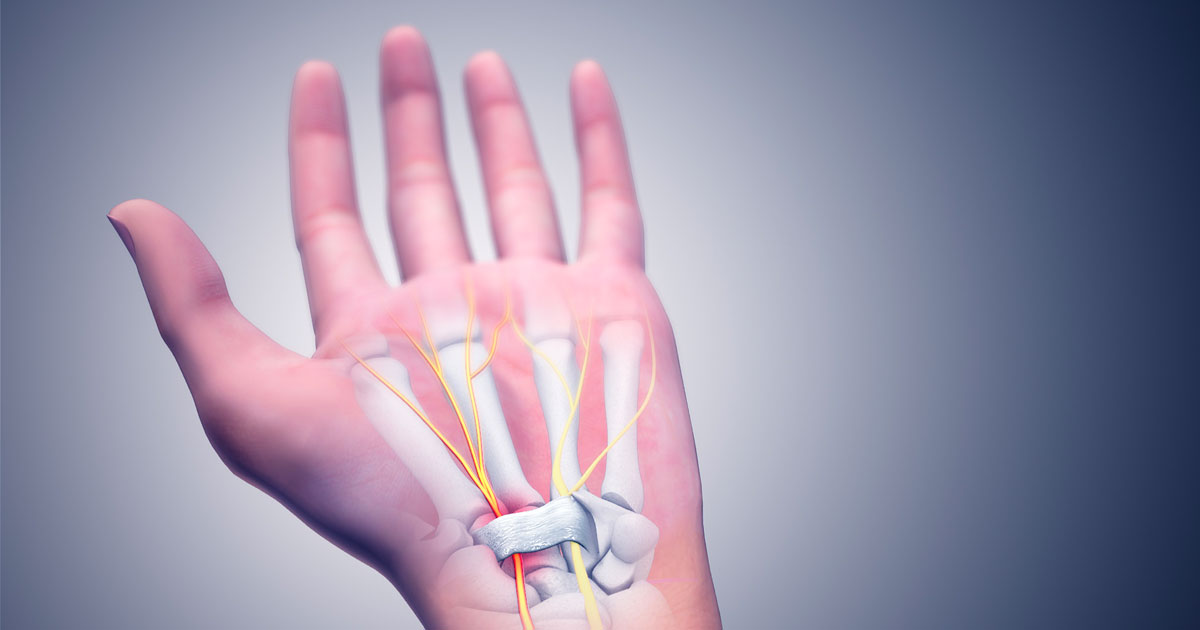
Carpal Tunnel Syndrome
Carpal tunnel affects 8% of the working population(1), and is the most common of the peripheral nerve entrapment syndromes(2). Carpal tunnel often develops as a gradual tingling or numbness over the palm of the hand, often at its worse while sleeping at night. If allowed to continue, the tingling and numbness can advance to a “burning” pain and eventually result in weakness of the muscles that grip and pinch.
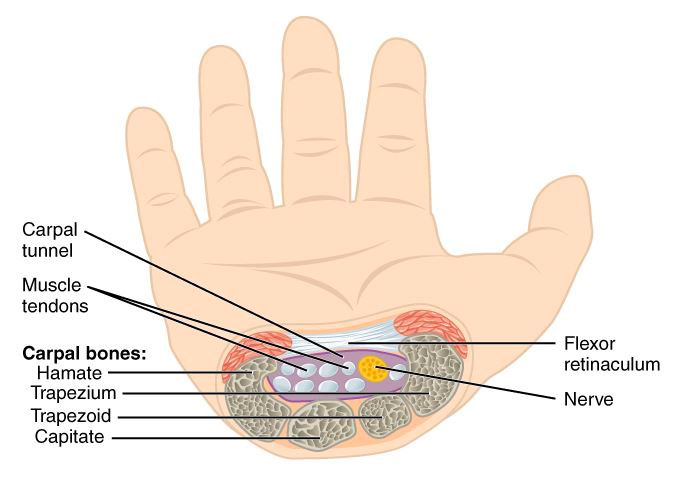
What causes carpal tunnel?
Carpal tunnel syndrome occurs when the median nerve, which supplies sensation and strength to most of the palm, becomes compressed as it passes through the carpal tunnel at the wrist. When the medial nerve is compressed and/or irritated it can cause sensory changes, weakness and nerve pain. The carpal tunnel itself is a canal bordered by the wrist bones and a connective tissue band, called the flexor retinaculum. Running through this canal with the median nerve are the flexor muscle tendons of the hand.
The median nerve is like a person in a crowded elevator. If the elevator (i.e. the carpal tunnel) is very small or becomes packed with people (i.e. muscle tendons), then the median nerve will become squashed.

What causes compression of the median nerve?
Technically speaking, how does compression of the median nerve occur? The large majority of carpal tunnel cases will occur from prolonged of repeated end-range flexion or extension of the wrist. The classic example of this is when we sleep with our hands bent up in front of us in a sustained flexed position of the wrist. This both compresses the median nerve, which leads to irritation and then potentially damage to the nerve tissue.
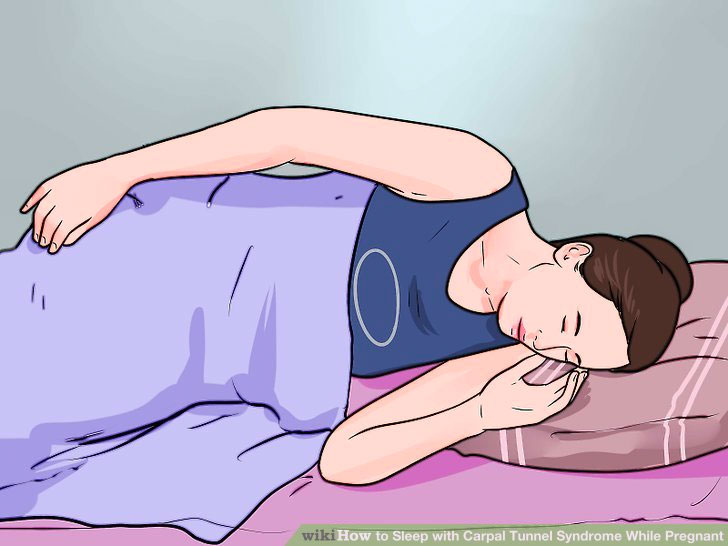
Pregnancy-related carpal tunnel
Women who are pregnant are especially vulnerable to carpal tunnel for 2 main reasons:
- Particular in the later trimesters, women are generally encouraged to sleep on their side. This is because lying flat on the back has the potential to impede the flow of blood back the heart. However, this means that women who are pregnant are more likely to adopt a wrist bent posture during sleep while on their side.
- During pregnancy, women tend to retain fluid throughout the body, causing swelling in the limbs. As a result, in these women the median nerve is more predisposed to compression during sleep as there is less space available in the carpal tunnel
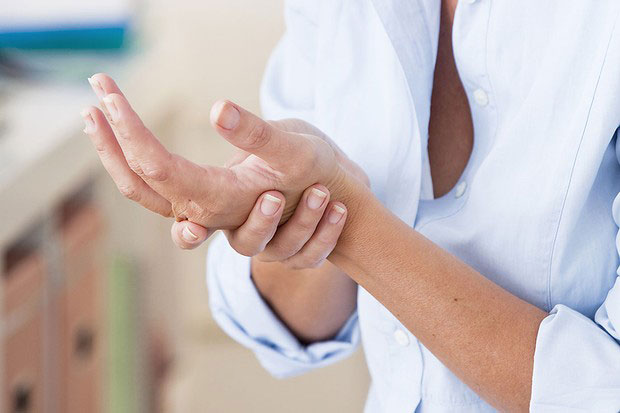
Treatment of Carpal Tunnel
To help relieve symptoms of carpal tunnel, it is important to identify the activities in everyday life that may be contributing to pain. Commonly, things such as sleeping position, wrist posture during computer work, breastfeeding when your wrist is flexed for extended periods of time. Once identified, modifications can be made to reduce compression on the medial nerve.
As a part of this, a physiotherapist or health professional may prescript a wrist guard to avoid those end-range wrist postures that compress the nerve, and allow healing. This is particularly useful during sleeping when you can’t be conscious of wrist position.
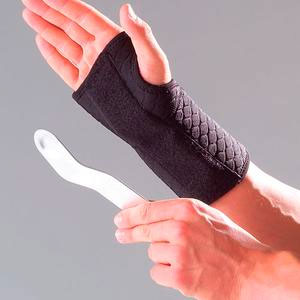
References
1. Dale, A. M., Harris-Adamson, C., Rempel, D., Gerr, F., Hegmann, K., Silverstein, B., … Evanoff, B. (2013). Prevalence and incidence of carpal tunnel syndrome in US working populations: pooled analysis of six prospective studies. Scandinavian journal of work, environment & health, 39(5), 495–505. doi:10.5271/sjweh.3351
2. Chammas, M., Boretto, J., Burmann, L. M., Ramos, R. M., Dos Santos Neto, F. C., & Silva, J. B. (2014). Carpal tunnel syndrome - Part I (anatomy, physiology, etiology and diagnosis). Revista brasileira de ortopedia, 49(5), 429–436. doi:10.1016/j.rboe.2014.08.001
3. Australian Government Department of Health. (2019, June 3). Carpal tunnel syndrome. Retrieved from https://www.health.gov.au/resources/pregnancy-care-guidelines/part-i-common-conditions-during-pregnancy/carpal-tunnel-syndrome.
